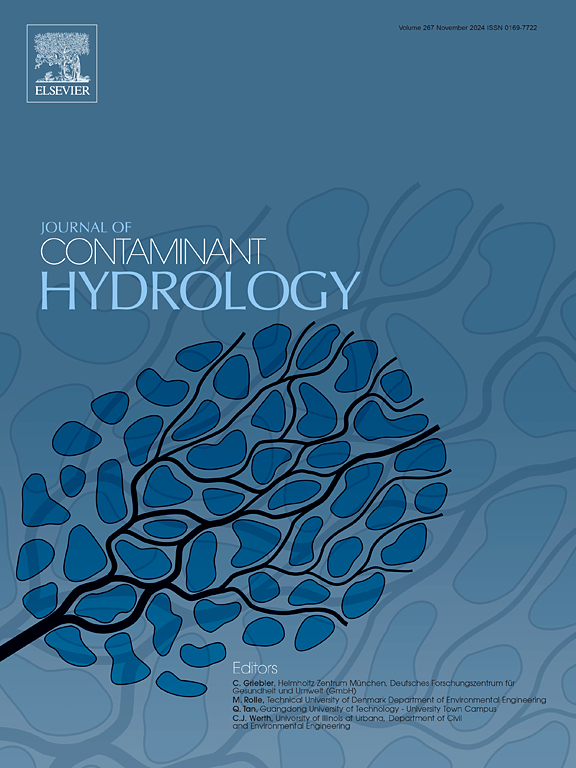AQuA-P: A machine learning-based tool for water quality assessment
IF 3.5
3区 环境科学与生态学
Q2 ENVIRONMENTAL SCIENCES
引用次数: 0
Abstract
This study addresses the critical challenge of assessing the quality of groundwater and surface water, which are essential resources for various societal needs. The main contribution of this study is the application of machine learning models for evaluating water quality, using a national database from Mexico that includes groundwater, lotic (flowing), lentic (stagnant), and coastal water quality parameters.
Notably, no comparable water quality classification system currently exists. Five advanced machine learning techniques were employed: extreme gradient boosting (XGB), support vector machines, K-nearest neighbors, decision trees, and multinomial logistic regression. The performance of the models was evaluated using the accuracy, precision, and F1 score metrics. The decision tree models emerged as the most effective across all water body types, closely followed by XGB. Therefore, the decision tree models were integrated into the AQuA-P software, which is currently the only software of its kind. It is recommended that these innovative water classification models be used through the AQuA-P software to facilitate informed decision-making in water quality management. This software provides a probability-based classification system that contributes to a deeper understanding of water quality dynamics. Lastly, an open-access repository containing all the datasets and Python notebooks used in our analysis is provided, allowing for easy adaptation and implementation of our methodology for other datasets worldwide.
AQuA-P:基于机器学习的水质评估工具。
本研究解决了评估地下水和地表水质量的关键挑战,这是满足各种社会需求的基本资源。本研究的主要贡献是应用机器学习模型来评估水质,使用墨西哥的国家数据库,其中包括地下水,流动(流动),死水(停滞)和沿海水质参数。值得注意的是,目前没有类似的水质分类系统。采用了五种先进的机器学习技术:极端梯度增强(XGB)、支持向量机、k近邻、决策树和多项逻辑回归。使用准确性、精密度和F1评分指标来评估模型的性能。决策树模型在所有水体类型中最有效,XGB紧随其后。因此,将决策树模型集成到目前同类软件中唯一的AQuA-P软件中。建议通过AQuA-P软件使用这些创新的水分类模型,以促进水质管理中的知情决策。该软件提供了一个基于概率的分类系统,有助于更深入地了解水质动态。最后,提供了一个开放访问的存储库,其中包含我们分析中使用的所有数据集和Python笔记本,从而可以轻松地针对全球其他数据集调整和实施我们的方法。
本文章由计算机程序翻译,如有差异,请以英文原文为准。
求助全文
约1分钟内获得全文
求助全文
来源期刊

Journal of contaminant hydrology
环境科学-地球科学综合
CiteScore
6.80
自引率
2.80%
发文量
129
审稿时长
68 days
期刊介绍:
The Journal of Contaminant Hydrology is an international journal publishing scientific articles pertaining to the contamination of subsurface water resources. Emphasis is placed on investigations of the physical, chemical, and biological processes influencing the behavior and fate of organic and inorganic contaminants in the unsaturated (vadose) and saturated (groundwater) zones, as well as at groundwater-surface water interfaces. The ecological impacts of contaminants transported both from and to aquifers are of interest. Articles on contamination of surface water only, without a link to groundwater, are out of the scope. Broad latitude is allowed in identifying contaminants of interest, and include legacy and emerging pollutants, nutrients, nanoparticles, pathogenic microorganisms (e.g., bacteria, viruses, protozoa), microplastics, and various constituents associated with energy production (e.g., methane, carbon dioxide, hydrogen sulfide).
The journal''s scope embraces a wide range of topics including: experimental investigations of contaminant sorption, diffusion, transformation, volatilization and transport in the surface and subsurface; characterization of soil and aquifer properties only as they influence contaminant behavior; development and testing of mathematical models of contaminant behaviour; innovative techniques for restoration of contaminated sites; development of new tools or techniques for monitoring the extent of soil and groundwater contamination; transformation of contaminants in the hyporheic zone; effects of contaminants traversing the hyporheic zone on surface water and groundwater ecosystems; subsurface carbon sequestration and/or turnover; and migration of fluids associated with energy production into groundwater.
 求助内容:
求助内容: 应助结果提醒方式:
应助结果提醒方式:


